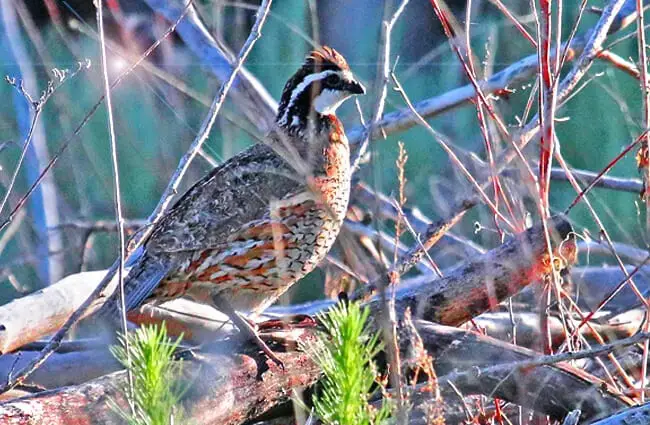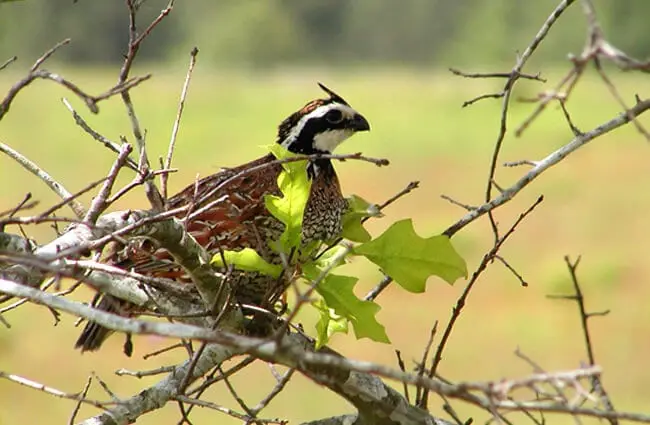A Comprehensive Guide to the Bobwhite Quail
The Bobwhite Quail, a ground dwelling bird native to North America, holds a significant place in both ecological systems and human culture. Often referred to as the ‘Northern Bobwhite’ (Colinus virginianus), this unassuming bird is a fascinating subject for naturalists, hunters, and anyone interested in the intricacies of wildlife. This guide aims to provide a detailed exploration of the Bobwhite Quail, covering its history, habitat, behavior, and its role in the environment.

Origins and Evolution
A Bird of Ancient Lineage
The evolutionary history of the Bobwhite Quail traces back to the family Odontophoridae, known as the New World Quail. These birds are believed to have originated in South America, gradually dispersing northward over millennia. Fossil evidence suggests that ancestors of the Bobwhite Quail were present in North America as early as the Pleistocene epoch. Unlike their Old World counterparts (true Quail of the Phasianidae family), New World Quail possess certain unique anatomical features, such as a more flexible neck and a different egg structure, highlighting their distinct evolutionary path.
Adaptation and Speciation
Over time, populations of Bobwhite Quail adapted to diverse environments, resulting in regional variations. While currently recognized as a single species, several subspecies exist, each exhibiting subtle differences in plumage, size, and vocalizations. These variations reflect the bird’s ability to fine-tune its characteristics to suit local conditions. For example, quail inhabiting more arid regions tend to be lighter in color, providing better camouflage in the dry vegetation.
Habitat and Distribution
Preferred Environments
Bobwhite Quail are adaptable birds, but they demonstrate a strong preference for early successional habitats. These areas, characterized by grasslands, savannas, shrublands, and open woodlands, provide the ideal combination of cover and foraging opportunities. Historically, natural disturbances like wildfires and grazing animals played a crucial role in maintaining these habitats. However, changes in land use practices, such as forest succession and intensive agriculture, have led to significant habitat loss and fragmentation.

Geographic Range
The Bobwhite Quail's range extends across a vast area of North America, encompassing the eastern and central United States, southeastern Canada, and parts of Mexico. Within this range, population densities vary considerably, with the highest concentrations found in states like Georgia, Oklahoma, and Texas. Southern populations tend to be more sedentary, while those in the northern part of the range exhibit migratory behavior, moving southward during the winter months.
Diet and Foraging Behavior
A Varied Menu
Bobwhite Quail are omnivorous birds with a highly diverse diet. Seeds constitute the bulk of their food intake, especially during the fall and winter months. However, they also consume insects, fruits, berries, and occasionally small invertebrates. This varied diet allows them to thrive in a range of habitats and adapt to seasonal changes in food availability. Young quail, known as chicks, rely heavily on insects for protein, which is essential for rapid growth and development.
Foraging Techniques
Bobwhite Quail employ several foraging techniques. They often scratch at the ground with their feet to uncover seeds and insects, and they frequently forage in groups, known as coveys, which enhances their ability to find food. They also exhibit a preference for foraging along edges between different habitat types, where food resources tend to be more abundant.

Reproduction and Life Cycle
Courtship and Nesting
Bobwhite Quail are typically monogamous during the breeding season, although occasional polygamous behavior has been observed. Males attract females through elaborate courtship displays, involving vocalizations, strutting, and wing-fluttering. Nests are shallow depressions in the ground, lined with grasses, leaves, and other vegetation. They are typically concealed under shrubs or within dense vegetation. A clutch usually consists of 12 to 16 eggs, which are incubated by the female for approximately 23 to 24 days.
Chick Development and Survival
Chicks are precocial, meaning they are relatively well-developed at hatching and can leave the nest within a few hours. They are initially dependent on the mother for protection and guidance, but they quickly learn to forage for themselves. Survival rates for chicks are often low, due to predation by hawks, owls, snakes, and other animals. Adult birds also face threats from predators, as well as habitat loss and hunting.
Ecological Role and Interactions
Seed Dispersal and Plant Propagation
Bobwhite Quail play an important role in seed dispersal and plant propagation. As they forage for seeds, they inadvertently transport them to new locations, contributing to the spread of plant species. They also help to control insect populations, which benefits both agricultural crops and natural ecosystems.

Predator prey Dynamics
Bobwhite Quail serve as an important prey species for a variety of predators. Their populations are influenced by the abundance of predators, as well as the availability of suitable habitat. Conversely, they also exert some control over predator populations, providing a food source for carnivores.
Bobwhite Quail and Human Interaction
Hunting and Game Management
Bobwhite Quail have long been a popular game bird for hunters. Hunting regulations are designed to ensure sustainable populations and prevent overharvesting. Game management practices, such as habitat restoration and predator control, are often employed to enhance quail populations and provide more opportunities for hunters.

Conservation Challenges and Efforts
Bobwhite Quail populations have declined significantly in recent decades, due to habitat loss, fragmentation, and changes in agricultural practices. Conservation efforts are focused on restoring and managing quail habitat, reducing predator populations, and promoting sustainable land use practices. These efforts involve collaboration between government agencies, conservation organizations, and private landowners.
Interesting Facts
- The “bob-white” call, from which the bird gets its name, is primarily made by males to attract females and establish territory.
- Bobwhite Quail can run at speeds up to 15 miles per hour when threatened.
- These birds often take dust baths to help maintain their plumage and remove parasites.
- Bobwhite Quail are known for their cooperative behavior, with covey members working together to detect predators and find food.
- They have a relatively short lifespan, typically living only one to two years in the wild.

The Bobwhite Quail, a seemingly unassuming bird, plays a vital role in the intricate web of life. Understanding its history, behavior, and ecological role is crucial for ensuring its continued survival and preserving the health of our ecosystems. By supporting conservation efforts and promoting sustainable land use practices, we can help to safeguard this iconic species for generations to come.

![Red Angus Closeup of a beautiful Red Angus cowPhoto by: U.S. Department of Agriculture [pubic domain]https://creativecommons.org/licenses/by/2.0/](https://animals.net/wp-content/uploads/2020/03/Red-Angus-4-238x178.jpg)




![Red Angus Closeup of a beautiful Red Angus cowPhoto by: U.S. Department of Agriculture [pubic domain]https://creativecommons.org/licenses/by/2.0/](https://animals.net/wp-content/uploads/2020/03/Red-Angus-4-100x75.jpg)

